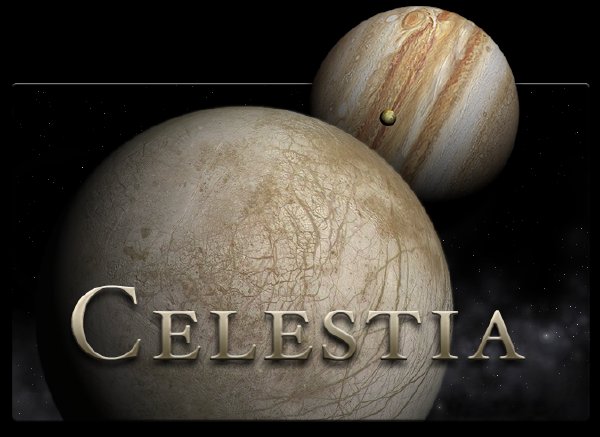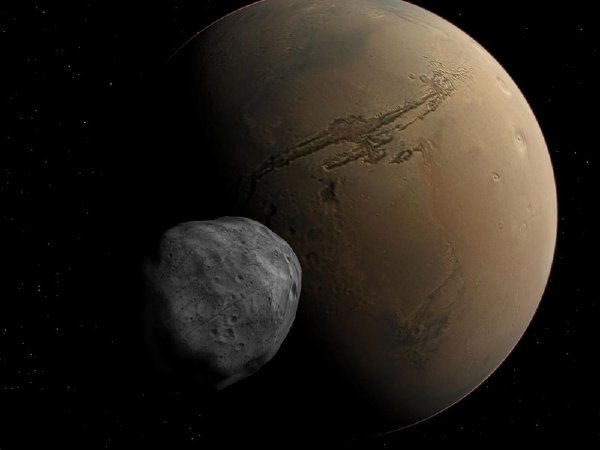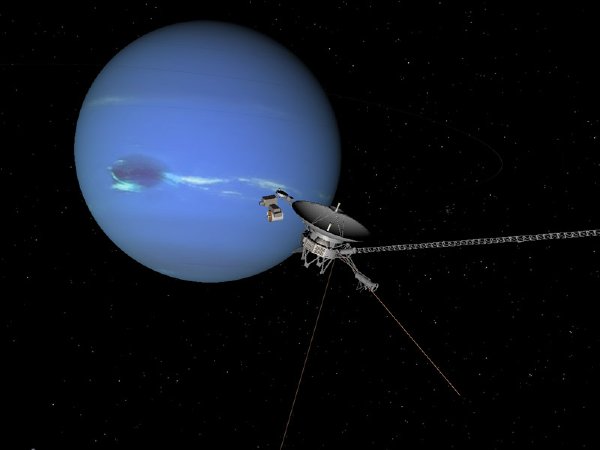《天際遨游》(Celestia for PC,Mac and Linux)v1.6.0[安裝包] 簡介: 中文名 : 天際遨游 英文名 : Celestia for PC,Mac and Linux 資源格式 : 安裝包 版本 : v1.6.0 發行時間 : 2009年 制作發行 : Shatters Software 地區 : 大陸,美國 語言 : 簡體中文,英文 簡介 : Celestia是一個免費的開放源代碼天文類軟件,通過它你不僅可以鳥瞰地球,還可以暢游太陽系,以
電驢資源下載/磁力鏈接資源下載:
- 下載位址: [www.ed2k.online][天際遨游].celestia-win32-1.6.0.exe
- 下載位址: [www.ed2k.online][天際遨游].celestia-osx-1.6.0.dmg
- 下載位址: [www.ed2k.online][天際遨游].celestia-gtk-1.4.1.x86.package
全選
"《天際遨游》(Celestia for PC,Mac and Linux)v1.6.0[安裝包]"介紹
中文名: 天際遨游
英文名: Celestia for PC,Mac and Linux
資源格式: 安裝包
版本: v1.6.0
發行時間: 2009年
制作發行: Shatters Software
地區: 大陸,美國
語言: 簡體中文,英文
簡介:

Celestia是一個免費的開放源代碼天文類軟件,通過它你不僅可以鳥瞰地球,還可以暢游太陽系,以及其它多達10萬顆星,甚至是銀河系以外的星座。你可以遠觀星雲,也可以近看飛行器。還可以通過設定時間,查看星體的運行軌跡。所有的查看和縮放都非常平滑。Celestia 包含了巨大的天文數據庫,包括恆星,行星,衛星,彗星以及太空船;如果原帶的這些庫還不能滿足你,你可以方便的下載和安裝擴展信息庫。 提醒諸位,如果你以後打算在此模型中加載數據的話清把此模型裝在你最大的盤裡,最好不要裝在C盤,小心以後加了別的東西後影響電腦速度。
Celestia與Stellarium最大的不同是視角的不同:Stellarium模擬的是當地的星空,以地面為出發點,仰望星空。Celestia則飛出地球,在太空中遨游。它還內置了抓圖及錄像功能,方便用戶把精彩的瞬間即時記錄並且和朋友分享。另外,Celestia還有自己的Motherlode,允許用戶創建3D模型。
Celestia操作並不復雜,甚至可以通過快捷鍵控制。[F8>開始運行,按1~9是快捷鍵,代表九大行星(現在是八大了,便宜了冥王星了^0^),再按“G”可以飛到你想要的行星了。空格鍵是暫停和恢復。“K”和“L”是時間加速和減速。“O”是顯示軌道。上下左右控制方向。
軟件說明:第一個文件為PC版安裝包,第二個文件為Mac版安裝包,第三個文件為Linux安裝包,請您根據自己系統合理下載。PC版具體使用操作參看主程序“幫助---->鍵盤操作幫助”。另外,本人上網時間有限,且為共享寬帶上網,歡迎大家做種分流。
官方網站:http://www.shatters.net/celestia/
運行環境:Windows 2000/XP/Vista/7;MacOS X 10.3.x or greater;Linux(x86)with OpenGL and GTK+ 2.6
安全檢測: 經Microsoft Security Essentials檢測無毒,版本2.0.657.0
安裝測試:windows 7下已通過安裝測試


英文名: Celestia for PC,Mac and Linux
資源格式: 安裝包
版本: v1.6.0
發行時間: 2009年
制作發行: Shatters Software
地區: 大陸,美國
語言: 簡體中文,英文
簡介:

Celestia是一個免費的開放源代碼天文類軟件,通過它你不僅可以鳥瞰地球,還可以暢游太陽系,以及其它多達10萬顆星,甚至是銀河系以外的星座。你可以遠觀星雲,也可以近看飛行器。還可以通過設定時間,查看星體的運行軌跡。所有的查看和縮放都非常平滑。Celestia 包含了巨大的天文數據庫,包括恆星,行星,衛星,彗星以及太空船;如果原帶的這些庫還不能滿足你,你可以方便的下載和安裝擴展信息庫。 提醒諸位,如果你以後打算在此模型中加載數據的話清把此模型裝在你最大的盤裡,最好不要裝在C盤,小心以後加了別的東西後影響電腦速度。
Celestia與Stellarium最大的不同是視角的不同:Stellarium模擬的是當地的星空,以地面為出發點,仰望星空。Celestia則飛出地球,在太空中遨游。它還內置了抓圖及錄像功能,方便用戶把精彩的瞬間即時記錄並且和朋友分享。另外,Celestia還有自己的Motherlode,允許用戶創建3D模型。
Celestia操作並不復雜,甚至可以通過快捷鍵控制。[F8>開始運行,按1~9是快捷鍵,代表九大行星(現在是八大了,便宜了冥王星了^0^),再按“G”可以飛到你想要的行星了。空格鍵是暫停和恢復。“K”和“L”是時間加速和減速。“O”是顯示軌道。上下左右控制方向。
Celestia
NASA uses Celestia in its outreach program. The software uses facts when possible, and at other times it guesses how the cosmos look using astronomical theory. Celestia doesn't tell you what's a fact and what's a guess, so you may see something -- for example, the sunspots on Polaris -- and wonder if it's real. I think Celestia's guesses make it more useful, not less.
Celestia needs hardware graphic acceleration on most computers. It has GNOME, KDE, and generic Gimp Toolkit (Gtk) front ends, but you need to choose which one to use when you compile Celestia, or choose the Celestia package for your distribution. I used the KDE front end for this review.
Celestia comes with a lot of detail: it has images and data that help render the surface of all the planets and major moons in our solar system, several planets outside our solar system, and thousands of stars. And if that isn't enough, Celestia's official add-on site, The Celestia Motherlode, has more than 10GB of extensions. Some extensions render high-quality images of specific places or spacecraft. Others add planets and space ships from science fiction and fantasy universes such as Babylon 5 and Star Wars.
Start Celestia from a desktop menu icon or type celestia into a command prompt. You start with the view from an invisible spacecraft orbiting the Sun near Earth.
You can get a feel for Celestia by using its built-in demo. Press d on the keyboard, and Celestia takes you on a tour of the universe and of Celestia's features. Or just start driving your space ship: press a to move forward, use the keyboard arrow keys to change direction, and press z to slow down.
Similar to Stellarium, you can press l to speed up time and press k to slow it down. While watching Earth, speeding up time makes the change from night to day happen every few seconds. Speed up time more to make the moon complete a full orbit every few seconds. Watch carefully and you'll see lunar and solar eclipses. During a solar eclipse, I suggest you slow down time to watch the Moon's shadow travel across Earth. You can compare Celestia to pictures of a real solar eclipse taken by astronauts on the International Space Station.
Click on a light source to display information about it. Double-click on the light source to center it in your display. Press g to go to the selected object or press f to follow it as it moves.
Press p, m, and b to turn on and off the labels of nearby planets, moons, and stars. Press / to draw lines between the stars in constellations. With the constellation lines turned on, you can travel far outside the solar system to see how the constellations change and eventually become unrecognizable.
I don't know of any free software educational program that is more fun or more beautiful than Celestia. I wish it were a little easier to use -- sometimes I think that learning to fly the space shuttle is probably easier than learning to fly Celestia's invisible space ship -- but mastering Celestia puts all the beauty of the cosmos at your fingertips.
Windows
The Windows package of Celestia is a self-extracting archive; download it to your computer and then run it.
Mac OS X
The Mac OS X package is a disk image. Download it to your computer, double click it, and follow the instructions in the README.
Linux (x86) Version 1.4.1
If you are running Linux, you should check first with your distribution; there is a good chance that the package is available to you in the format best suited to your installation. A pre-compiled 32-bit version is provided in the autopackage format. It should run on any distribution that has OpenGL and GTK+ 2.6.
Source Code
Celestia is an open-source project. As such, its source code is provided and is freely modifiable and redistributable as per the GNU Public License. Installation instructions are provided in the INSTALL file.
軟件說明:第一個文件為PC版安裝包,第二個文件為Mac版安裝包,第三個文件為Linux安裝包,請您根據自己系統合理下載。PC版具體使用操作參看主程序“幫助---->鍵盤操作幫助”。另外,本人上網時間有限,且為共享寬帶上網,歡迎大家做種分流。
官方網站:http://www.shatters.net/celestia/
運行環境:Windows 2000/XP/Vista/7;MacOS X 10.3.x or greater;Linux(x86)with OpenGL and GTK+ 2.6
安全檢測: 經Microsoft Security Essentials檢測無毒,版本2.0.657.0
安裝測試:windows 7下已通過安裝測試


- 上一頁:《Nero刻錄軟件》(Nero Lite & Micro Edition)v10.5.10500[壓縮包]
- 下一頁:《HDR成像插件》(NikSoftware HDR Efex Pro)V1.2.0.0專業版[壓縮包]
相關資源:
- [行業軟件]《建築設計與營建文件建檔程式》(Autodesk AutoCAD MEP Version 2008)[ISO]
- [編程開發]《VC助手 10.3.1559》(Visual Assist X 10.3.1559)10.3.1559,編程開發、資源下載
- [行業軟件]《建築詳圖解決方案》(AUTODESK AUTOCAD STRUCTURAL DETAILING)VERSION 2012 WIN32|WIN64[光盤鏡像]
- [軟件綜合]《FTP客戶端軟件》(CrossFTP Pro)專業版v1.59a/含注冊機/Win+Linux[壓縮包]
- [編程開發]《構建MacOSX及iOS應用程序開發工具集》(Apple Xcode)v4.0.2 and iOS SDK v4.3[光盤鏡像]
- [行業軟件]《Matlab(高級技術計算語言和交互式環境)》(Mathworks Matlab )Release 2009b win32/64 /UNIX[光盤鏡像],行業軟件、資源下載
- [應用軟件]《OmniForm表單管理》(OmniForm Premium)5.0[Bin]
- [行業軟件]《機器視覺軟件》(MVTec HALCON v8.0.2)[壓縮包]
- [軟件綜合]avast!!!!!!個人認為比較好的殺軟。哈哈。聰明人免費用!!
- [多媒體類]《索尼媒體軟件 Vegas+DVD Production Suite 光盤鏡像》(Sony Media Software - Vegas+DVD Production Suite)5.0a/2.0a
- [應用軟件]《專業圖片管理軟件》(Accessory Software Picture Organizer)v6/含注冊碼[壓縮包]
- [光盤游戲]《整人TV秀》(Prank TV)Clone版\破解版[ISO]
- [硬盤游戲]《模型火車3D》(Model Train 3D)硬盤版
- [經濟管理]《防錯、防誤與防呆措施應用技巧》掃描版[PDF
- [文學圖書]《為什麼上大學》(Why Go to College?: An Address)((美)艾麗絲·弗裡曼·帕爾默)英文文字版[PDF]
- [教育科技]《宇宙.外星人之謎》掃描版[PDF]
- [其他圖書]《機修手冊(第三版)》(機修手冊(第三版))第三版[PDF]
- [其他資源綜合]中文版3ds max+vray+photoshop園林景觀效果圖表現案例詳解
- [計算機與網絡]《Iphone 和 Ipad應用雜志 2012年6月》(Tap! the Iphone & Ipad magazine_June_2012)影印版[PDF]
- [應用軟件]快播去廣告版V5.0.80永不升級版,完美版
- 迅雷白金會員一鍵獲取登陸器!牛!最新版本!
- 《JUJU 貓論壇系統克隆准備工具 V1.0.0.0 Beta》為你制作克隆做好基礎工作,為你制作克隆節省時間。
- 《2006年度世界桌面美化大賽獲獎作品集》(The GUI Championships 2006 Winners' Collection)新增[所需軟件]
- µTorrent® (uTorrent) Plus v3.4.2 Build 32354 Final(最棒的bt資源發布器)
- 開心泡泡貓輔助瞄准器7500
- 《力克紡織品設計》(Lectra U4IA GRAPHIC v7R1C9)[Bin],應用軟件、資源下載
- 《金山詞霸&快譯 2007 免激活純淨版》[ISO],應用軟件、資源下載
- 《應用程序開發》(Embarcadero RAD Studio XE Partner Software)[光盤鏡像]
- 《微軟拼音輸入法 2007 Beta2》(Office 2007 Beta2 Office Rip),應用軟件、資源下載
- 《平面設計軟件合集》(CD PS AI Macromedia)[ISO]
- 《制作邀請函的Outlook插件》(Axonic AppointmentStyler)v1.2.1.206/含注冊機[壓縮包]
- 《RedOffice for Linux windows個人版》3
免責聲明:本網站內容收集於互聯網,本站不承擔任何由於內容的合法性及健康性所引起的爭議和法律責任。如果侵犯了你的權益,請通知我們,我們會及時刪除相關內容,謝謝合作! 聯系信箱:[email protected]
Copyright © 電驢下載基地 All Rights Reserved



